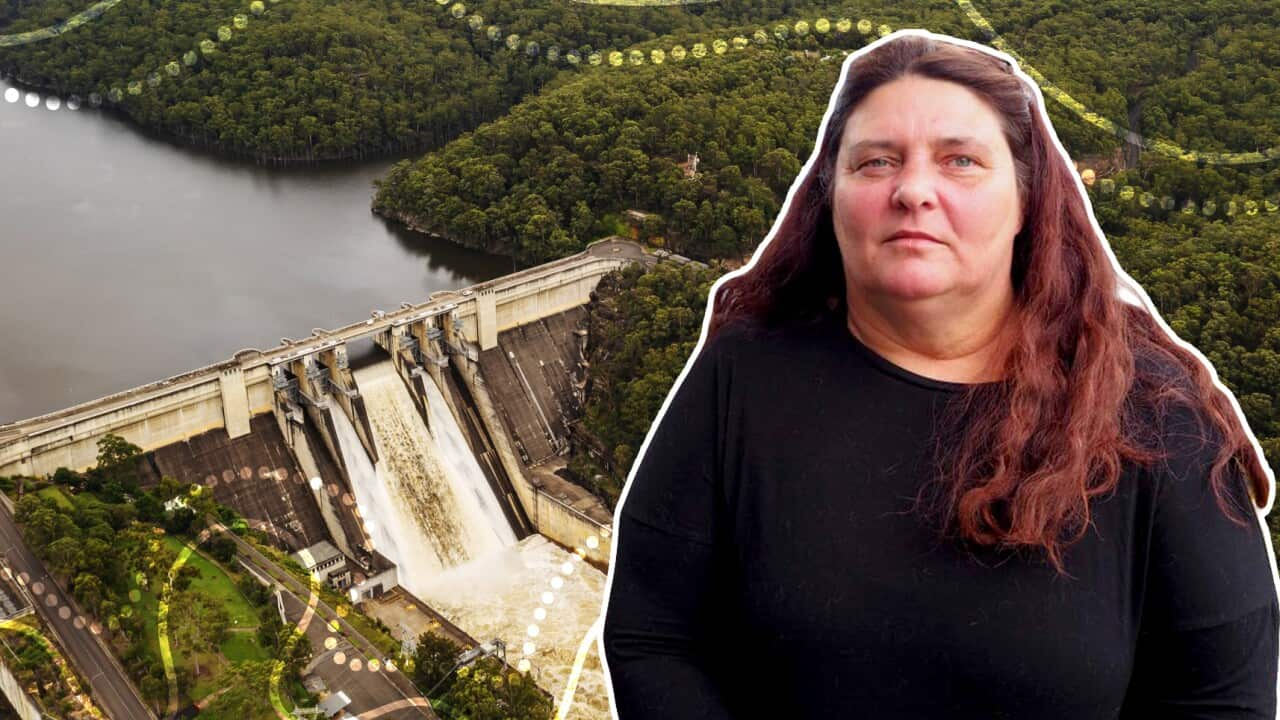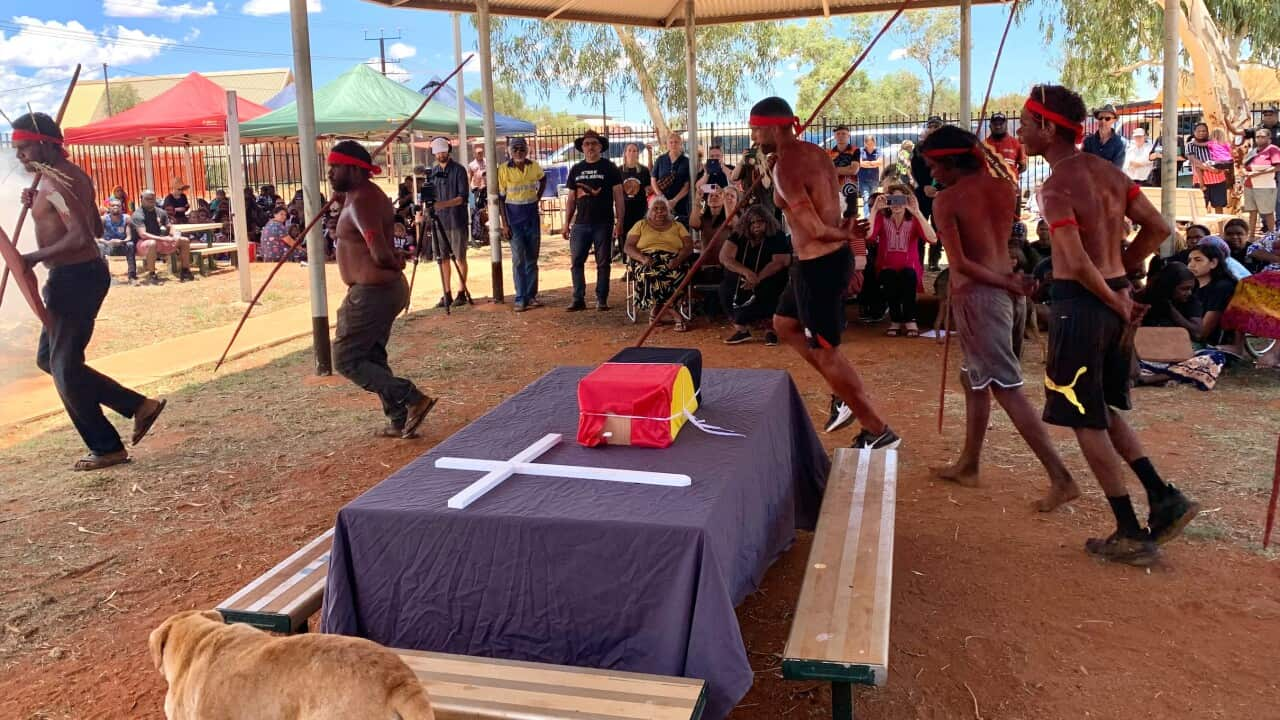For palawa man, Andry Sculthorpe, a light flight from Bridport on the north-east coast of Tasmania, is the usual commute to work.
As the land and heritage coordinator for the Tasmanian Aboriginal Centre, he’s part of an ecosystem restoration project on a remote island in the Bass Strait called lungtalanana.
From the air the island is a visual spectacle, 8000 hectares of sprawling wilderness, surrounded by crystal blue water.
“It was part of the country of our ancestors but two hundred years ago when white people started to come to these islands, they really took a lot away from these places,” Sculthorpe tells NITV News.
“There was lots of exploitation of whales, seals, they set up farming on the islands, the islands are small and those small island ecosystems are also quite fragile.”
For these two centuries, the island was known as Clarke Island.
![Andry Sculthorpe[92].jpg](https://images.sbs.com.au/11/8e/0bb1986347368af21d6511e17008/andry-sculthorpe92.jpg?imwidth=1280)
palawa man, Andy Sculthorpe, is the land and heritage coordinator for the Tasmanian Aboriginal Centre, working to restore the ecosystem on lungtalanana. Credit: Supplied
Together with the World Widlife Fund, the rangers are working to restore this ecosystem to its former glory. One technique is through conducting frequent cool burns, an Aboriginal land management practice that encourages greater biodiversity.
“By putting fire gently through these landscapes in patches, burning these grasses, that's allowing those grasses to flourish and stops the overstory of these scrubs of sheoak and tea tree scrub from fully inundating these areas,” he said.
Repatriating lost animals
Introduced species such as feral cats have decimated most of lungtalanana’s native wildlife. A handful of pademelons are among the last surviving native animals.
As the environment starts to flourish, the rangers want to repatriate lost species that hold cultural significance. The first native animal they would like to reintroduce to the island is the wombat.
“Animals are a part of the way in which life is balanced out,” Sculthorpe said.
“The activities of wombats with their digging and their burrowing puts nutrients back into the soil, creates microhabitats for plants to grow, and also provides other small animals refuge in those burrows.”
The team is monitoring the feral cat population on the island but Sculthorpe says further funding is needed to carry out a large-scale pest eradication program.
“We believe once we can do that, that sets up this place as a wonderful benchmark for how this landscape can be restored,” he said.
The restoration of land and sea habitats invites natural processes to rebound and enhances the biosphere's carbon cycle.
For this reason, the team is also mapping kelp forests and monitoring the seagrass beds around the island.
“They [the seagrass beds] are huge carbon soaks, so they would hold more carbon than a rainforest holds,” Fiona Maher, Sea Country ranger with the pakana rangers said.
“Healthy ecosystems for me, is healthy people.”
First Nations knowledge is leading this project, showing how to care for the land, with cultural values at the forefront.
“We are custodians of this land,” pakana ranger Mathew Wheatley said.
It's important for us to keep the ecology of this place running at a smooth level, so we can try and get the Country back to the way it was.
What is ‘rewilding’?
In comparison to the rest of the world, Australia has one of the worst animal extinction records, but some experts say Tasmania could hold the key to restoring ecosystems.
Rob Brewster is the rewilding program manager with the World Wildlife Fund Australia.
“Tasmania has only lost one mammal species, the Thylacine, the Tasmanian tiger, and that was due to hunting,” he said.
“We've lost about 35 mammal species up on the mainland.
![Rangers on lungtalanana[79].jpg](https://images.sbs.com.au/1e/a7/950f7b2f42f0bced42e7b816dbe1/rangers-on-lungtalanana79.jpg?imwidth=1280)
Rangers on lungtalanana Credit: Supplied
Rewilding is a conservation process that involves repatriating wildlife to damaged ecosystems and allowing nature to 'bounce back.'
Some scientists say greater attention should be placed on the role of animals in controlling the carbon cycle - suggesting the introduction of even a targeted group of species to some ecosystems could be enough to keep global temperatures below the 1.5 degree Celsius tipping point.
Around the world, there have been various successful efforts to rewild ecosystems.
In the UK, the reintroduction of beavers has decreased the effects of floods in certain waterways due to their dam-building capability. In Africa, the restoration of blue wildebeest populations in the Serengeti has helped the ecosystem move from being a carbon source to a carbon sink.
Australia has various initiatives of its own, including reintroducing the platypus to the Royal National Park near Sydney.
The Tasmanian Land Conservancy has various programs aiming to bolster eastern quoll populations in Tasmania - while other initiatives are underway to try to reintroduce them to the mainland where they have been extinct since the 1960s.
“Eastern quolls are super important to the ecosystem that they're in, they are measle predators, which is one step below your top-level predator like your Tasmanian devil or dingo,” David Hamilton, a conservation ecologist with the Tasmanian Land Conservancy said.
“They're predating smaller species in the landscape, which means they're regulating things all the way down the system.”
A breeding program is underway to help eastern quolls repopulate their ecosystem niche.
Doctor Hamilton says healthy ecosystems can help to mitigate the effects of climate change.
“Healthy ecosystems are more resilient in some ways to change as well,the more thriving populations they have going all the way through them the more buffered they can be against some of the greater impacts we are having.”
![Fiona with seaweed[8].jpg](https://images.sbs.com.au/dims4/default/0d1034a/2147483647/strip/true/crop/4032x2268+0+174/resize/1280x720!/quality/90/?url=http%3A%2F%2Fsbs-au-brightspot.s3.amazonaws.com%2F72%2F42%2F26fe36cb444f9b75be9ee7716265%2Ffiona-with-seaweed8.jpg&imwidth=1280)













